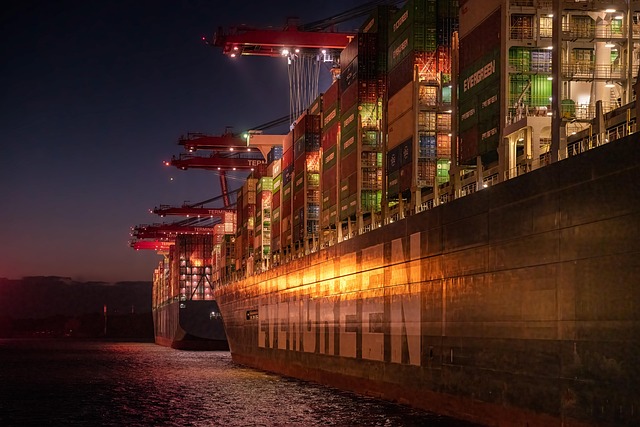Conex boxes (shipping containers) are versatile steel structures with crucial flooring options—concrete or plywood—for stability and load bearing. Load capacity varies by model, manufacturer, and modifications, requiring professional expertise for safe use. Dimensions, weight distribution, and load type significantly impact carrying capacity globally. Upgrading to conex boxes enhances structural integrity, making them ideal for heavy-load applications like modular offices and storage. Easily purchased, rented, or used, with various dimensions and price points, they offer cost-effective solutions for different industries.
“Looking to bolster the structural prowess of your conex boxes? Discover how upgrading flooring can significantly enhance their load-bearing capacity. This comprehensive guide delves into the fundamentals of conex box flooring, unravels factors influencing weight distribution, and provides practical insights for effective upgrades. From material choices to installation best practices, master the art of strengthening these versatile metal structures. Elevate your conex boxes’ performance with expert advice tailored for optimal structural integrity.”
- Understanding Conex Box Flooring Basics
- Factors Affecting Load-Bearings in Conex Boxes
- Upgrading for Enhanced Structural Integrity
Understanding Conex Box Flooring Basics

Conex boxes, or shipping containers, are versatile and robust structures that have become an integral part of modern logistics and construction. These metal enclosures, typically made from steel, are designed for safe transportation and storage of goods worldwide. With their unique construction, conex boxes offer more than meets the eye when it comes to flooring.
The flooring within a conex box is a crucial component, ensuring stability and load-bearing capacity. Standard conex boxes feature solid floors, usually made from concrete or plywood, which can withstand significant weight. These floors are designed to protect the contents inside and provide a stable surface for various applications. Whether you’re looking to buy a new conex box, rent one for temporary storage, or explore used conex boxes for sale, understanding the flooring basics is essential. Key considerations include dimensions (like floor area), pricing, and potential modifications for specific needs, ensuring your conex box worksite is equipped with the best possible solutions.
Factors Affecting Load-Bearings in Conex Boxes

The load-bearing capacity of Conex boxes, also known as shipping containers, depends on several key factors. Conex boxes are designed to withstand substantial weight, making them ideal for various applications like storage, transportation, and even modular construction. However, their structural integrity varies based on elements such as the model year and manufacturer. Older Conex boxes might show signs of wear and tear, impacting their load-bearing capabilities. Material quality is another critical aspect; containers made from superior steel alloys can support heavier loads than those with lower-grade materials.
Additionally, proper Conex box modifications and conversions are essential to enhance their load-bearing capacity for specific uses. These alterations include reinforcing structural elements, adding custom interiors, or integrating access points. It’s crucial to note that while some DIY modifications might be feasible, complex conversions should be handled by professionals who understand the container’s structural requirements. Factors like conex box dimensions, weight distribution, and the nature of the load play significant roles in determining the safe carrying capacity of these versatile containers, whether they are new, used, or rented from dealers and suppliers across the globe.
Upgrading for Enhanced Structural Integrity

When it comes to enhancing structural integrity on construction sites and worksites, upgrading to Conex boxes is a strategic move. These robust shipping containers are designed with precision engineering in mind, ensuring they can withstand immense pressure and heavy loads. By investing in Conex box flooring upgrades, you’re not just improving the container’s capacity; you’re fortifying its overall stability and durability. This modification is particularly beneficial for storing and transporting fragile or high-value items, as it provides a secure platform that minimizes the risk of damage during transit.
Conex boxes, with their versatile nature, offer more than just increased load-bearing capabilities. They can be easily bought, rented, or used as storage solutions, making them a cost-effective choice for many businesses. With various dimensions and price points available, finding the right Conex box to suit your needs is straightforward. Dealing with reputable suppliers ensures you get high-quality products that are fit for purpose, whether you’re looking for new, used, or even wholesale options. These containers can also be modified and converted into modular offices, sales offices, or even storage yards, proving their adaptability in different industries.
Conex box flooring upgrades are a strategic investment for enhancing structural integrity and load-bearing capacity. By understanding the basic components and factors influencing load-bearings, you can make informed decisions to strengthen these versatile storage solutions. Upgrading your conex box flooring ensures longevity, safety, and the ability to withstand heavier loads, making it an indispensable step in maximizing the potential of these portable structures.
